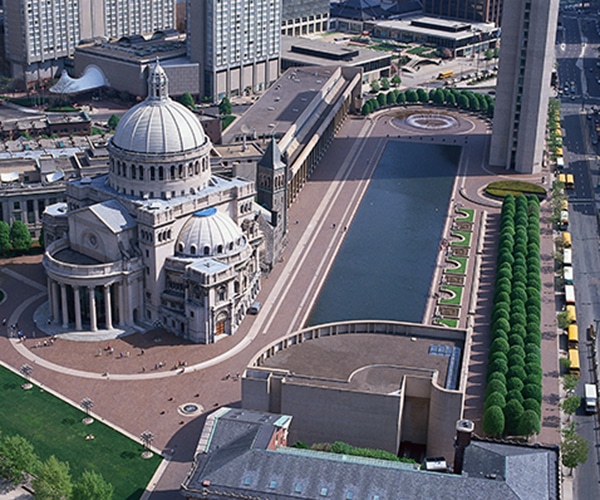From one perspective, sustainable building is an ancillary industry, relying heavily on the larger domains of science and technology. The rate at which fresh, cutting-edge technologies can be propelled from the lab bears a direct connection to the capacity for architectural experts to map out the most desirable eco-conscious constructions for their clients and the natural environment alike. From another perspective, it is an industry rooted firmly in pragmatism, embracing proven techniques and methodologies—using these models as a template to expand upon and polish as needed. A noted example of the latter would be American Hydrotech’s long-celebrated Monolithic Membrane 6125, a roofing membrane that literally turned the traditional model upside-down. We caught up with Dennis Yanez, American Hydrotech national marketing director, to learn more about the significance of this time-honored sustainable roofing epitome.

After 32 years, the former Pac Bell Headquarters Protected Membrane Roof still performs today like the day it was installed.
gb&d: American Hydrotech has been in business since 1977, and your most celebrated product is the classic Monolithic Membrane 6125. What were the factors that ultimately led to the development of this product?
Dennis Yanez: Monolithic Membrane was developed by Uniroyal’s construction products division in the early 1960s at the request of the Canadian government. They were looking for a bridge decking/waterproofing product that could be applied at low temperatures and withstand the test of time. Over the years, American Hydrotech has adapted this product for a variety of configurations: reflecting pools, plaza waterproofing, roofing, and, most recently, vegetated roofing (Hydrotech’s Garden Roof Assembly).
gb&d: What inspired Dow Chemical’s experiment of reversing the insulation and the membrane that produced the results exhibited by the Monolithic Membrane 6125?
Yanez: Dow was looking for additional applications for Styrofoam brand Extruded Polystyrene rigid board insulation. Again, developed initially for cold weather markets, the Insulated Roof Membrane Assembly (IRMA) typically referred to today as a Protected Membrane Roof (PMR) was tested and deemed to provide outstanding performance by the Army Corps of Engineers in the early 1970s.
gb&d: What sets the composition of the Monolithic Membrane 6125 apart from that of its competitors? How does it represent a significant evolutionary leap in sustainable architecture?
Yanez: Monolithic Membrane 6125 not only has a unique formulation that gives it unmatched performance and workability, but that same original formulation is still in use today. The membrane is comprised of asphalt, synthetic polymer, oil, rubber crumb, and clay. Sustainable architecture by definition is long-lasting. MM6125 has a proven track record of longevity, keeping structures watertight for 50+ years. If that doesn’t meet the definition of “sustainable,” what does?
gb&d: What are some noteworthy examples of the Monolithic Membrane 6125 applied to architectural projects?
Yanez: MM6125 has been entrusted with keeping high profile structures across the country and around the globe watertight for more than 50 years. Unique applications include the reflecting pool at the First Church of Christ Scientist in Boston, where the membrane has been performing in a continually submerged condition since 1971, to roofing the former Pac Bell Headquarters in San Ramon in 1983.
gb&d: How long has American Hydrotech been in the business of sustainability? What are some of the ways that this priority is translated through the Monolithic Membrane 6125?
Yanez: In 1996, when American Hydrotech brought over technologies from Germany to launch the Garden Roof Assembly, the first single source warranty vegetated roof assembly in the US. It was a significant investment of time, resources and money in bringing sustainability to the architectural and design community. In the early days of marketing the Garden Roof Assembly, there were many blank stares back at us when we suggested keeping water on the roof to support plants. Fast forward 19 years, and vegetated roofs are a common and accepted design principal, but it was some tough uphill sledding to get architects to embrace the concept.
gb&d: What are some of the environmental advantages to be gained from employing the Garden Roof Assembly?
Yanez: Replacing the impervious surface of a conventional roof with a vegetated roof can help to substantially reduce stormwater runoff and help to restore the balance with nature in our urban centers. Reducing the Urban Heat Island Effect, re-creating natural habitats for various insects and animals, and a reduction in dust and smog levels are additional environment benefits from installing a vegetated roof.

